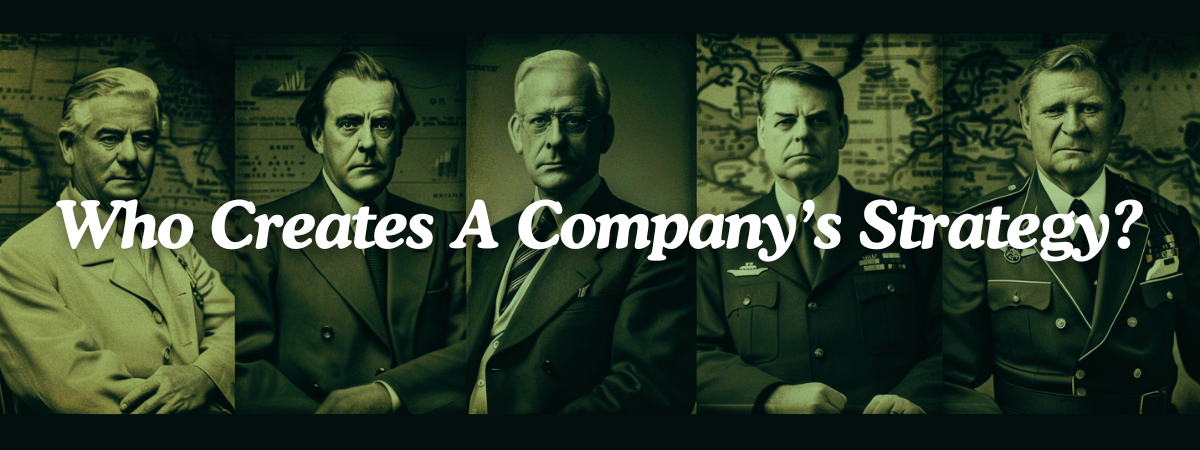Who Creates a Company’s Marketing Strategy?
Creating a company’s marketing strategy is a multifaceted process that involves various roles and contributions across the organisation. While theoretically, anyone can propose a marketing strategy, its successful implementation requires the backing and engagement of both strategic decision-makers and the broader marketing team.
Let’s delve into the specifics of who typically creates a marketing strategy and how this collaborative process unfolds.
Note:
This article features content from the Marketing Made Clear podcast. You can listen along to this episode on Spotify:
Leadership and Strategic Direction
As a general rule, the person responsible for marketing within an organisation will also spearhead the development of the marketing strategy. This role is commonly held by the Chief Marketing Officer (CMO) or Marketing Director in larger companies. These leaders are tasked with setting overarching marketing objectives, ensuring alignment with business goals, and overseeing the effective implementation of marketing initiatives.

Chief Marketing Officer (CMO) or Marketing Director
In larger companies, the CMO or Marketing Director takes the helm in creating the marketing strategy. Their responsibilities include:
- Setting overall marketing objectives: Defining what the company aims to achieve through its marketing efforts.
- Aligning strategies with business goals: Ensuring that marketing initiatives support the broader objectives of the business.
- Gaining executive support: Presenting the marketing strategy to the executive leadership team to secure their backing.
These leaders provide the vision and direction, but the development process involves input from various team members and departments.

Collaborative Input from the Marketing Team
A marketing strategy is seldom the product of a single individual. It requires collaboration and input from different stakeholders within the marketing team.
Here’s how different roles contribute:
Marketing Managers and Specialists
- Market Researchers: They identify market segments and customer profiles, providing crucial insights into the target audience.
- Digital Marketing Managers: They determine the digital channels to be used for reaching the identified customer segments.
- Content Strategists, SEO Experts, and other forms of management, like Advertising Managers: Each brings specialised knowledge to shape specific aspects of the strategy, from content creation to search engine optimisation and advertising tactics.
This collaborative approach ensures that the marketing strategy is comprehensive and leverages the expertise of various specialists.
The Role of Executive Leadership
The marketing strategy must be championed by the executive leadership team within an organisation.
This typically involves:
- Presentation and Approval: The CMO or Marketing Director presents the strategy to the executive team, seeking their support and approval.
- Strategic Alignment: Ensuring that the strategy aligns with the company’s overall strategic direction and receives the necessary resources for implementation.
Involvement of External Consultants and Agencies
In smaller companies or in instances where specific expertise is lacking in-house, external consultants and agencies play a critical role. They may be involved in both the creation and implementation of the marketing strategy.
Their contributions can include:
- Market Research and Analysis: Providing insights and data to inform the strategy.
- Strategic Development: Assisting in the formulation of marketing objectives and plans.
- Implementation: Executing marketing campaigns and initiatives as outlined in the strategy.
Engaging external experts ensures that even companies with limited internal resources can develop and implement effective marketing strategies.

Summary
The creation of a marketing strategy is a collaborative effort that involves leadership from the marketing head, input from various marketing team members, and sometimes, external consultants and agencies. The process includes setting clear objectives, aligning strategies with business goals, and securing executive support to ensure successful implementation.
Ultimately, while the strategy’s creation is a collective endeavour, the responsibility for its execution lies with the marketing leader, who ensures that the strategy is put into practice effectively.
Up Next:
What Elements Should a Marketing Strategy Cover?


